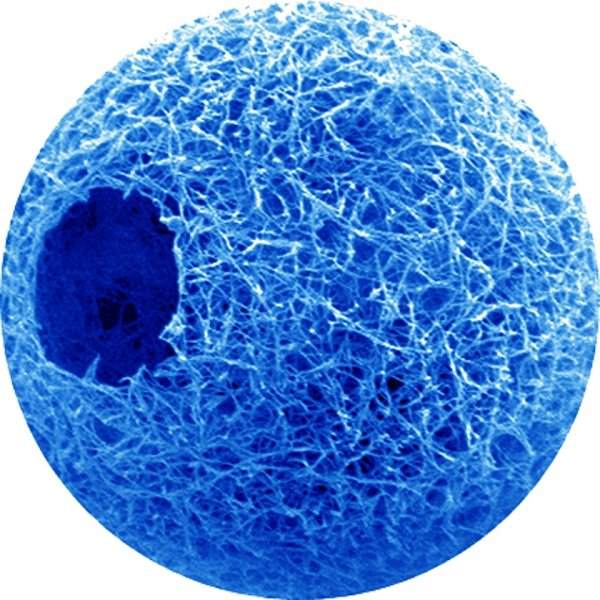Scientists have made biodegradable polymers that can self-assemble into nanofiber spheres. They are injected into wounds to help cells form new tissue.
The development process of this nanofiber sphere as a cell carrier that simulates the natural growing environment of the cell is a very significant advance in tissue repair, says Peter Ma, professor at the University of Michigan School of Dentistry and lead author of a paper about the research scheduled for advanced online publication in Nature Materials. The co-authors of the paper are Xiaohua Liu and Xiaobing Jin.
Tissue repair is very difficult and success is extremely limited by a shortage of donor tissue, explains Ma, who also has an appointment at the U-M College of Engineering. The procedure will give hope to people who have certain types of cartilage injuries that don’t have many good treatment options available.
It will also provide an enhanced alternative to ACI, which is a scientific method of treating cartilage injuries where the patient’s own cells are openly injected into the patient’s body. The tissue repair quality from the ACI method isn’t very good because the cells are injected loosely and are not supported by a carrier that mimics the natural environment for the cells.

To heal intricate or oddly shaped tissue weaknesses, an injectable cell carrier is desirable to attain accurate fit and to decrease surgery. Ma’s lab has been working on a biometric strategy to design a cell matrix¬¬, a system that copies biology and supports the cells as they grow and form tissue, using biodegradable nanofibers.
According to Ma, the nanofibrous hollow microspheres are very porous, which lets nutrients enter easily, and they imitate the functions of cellular matrix in the body. In addition, the nanofibers in these hollow microspheres do not produce much degradation byproducts that would harm the cells.
The nanofibrous hollow spheres are mixed with cells and then injected into the wound. When the spheres, which are a little bigger than the cells they carry, degrade at the wound site, the cells they are carrying have already had a good start growing because the nanofiber spheres provide an atmosphere in which the cells naturally flourish.
This system has had more success than the traditional cell matrix currently used in tissue growth. Up until now, there has been no mode to make such a matrix injectable so it’s not been used to distribute cells to complex-shaped wounds.
When it was tested, the nanofiber repair group grew as much as three to four times more tissue than the control group, Ma says. The natural next step is to see how the new cell carrier works in larger animals and eventually in people to repair cartilage and other tissue types.
Information provided by: University of Michigan News Service.






